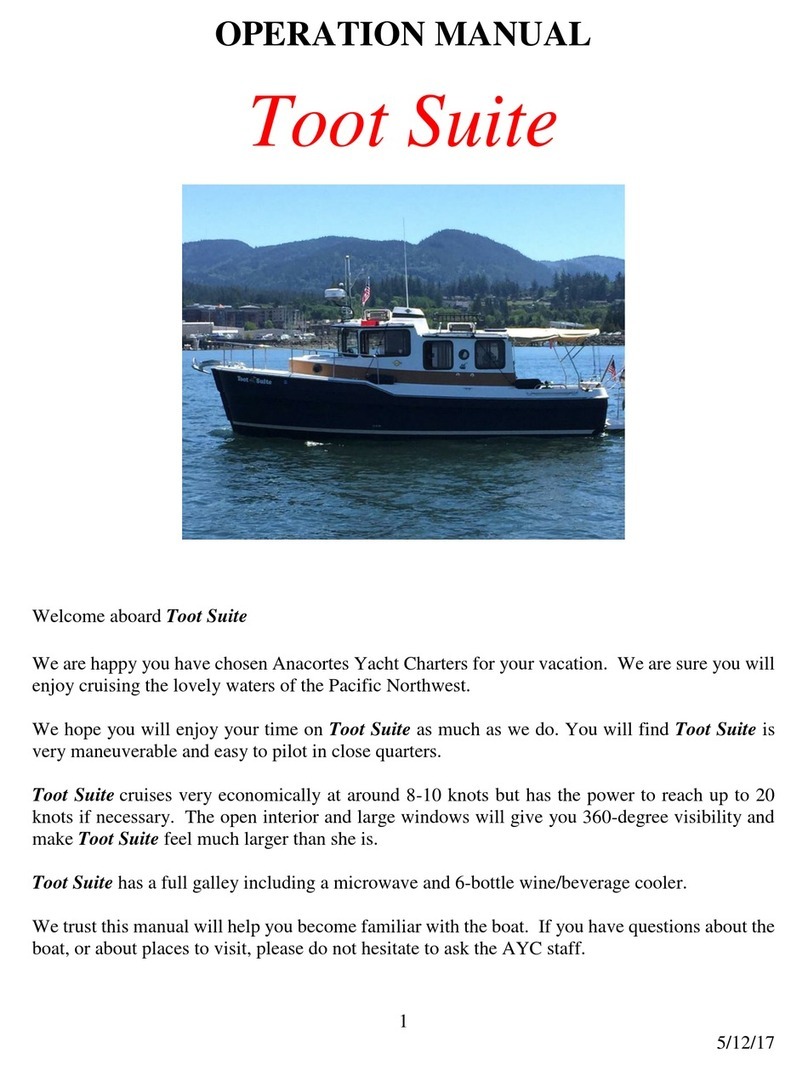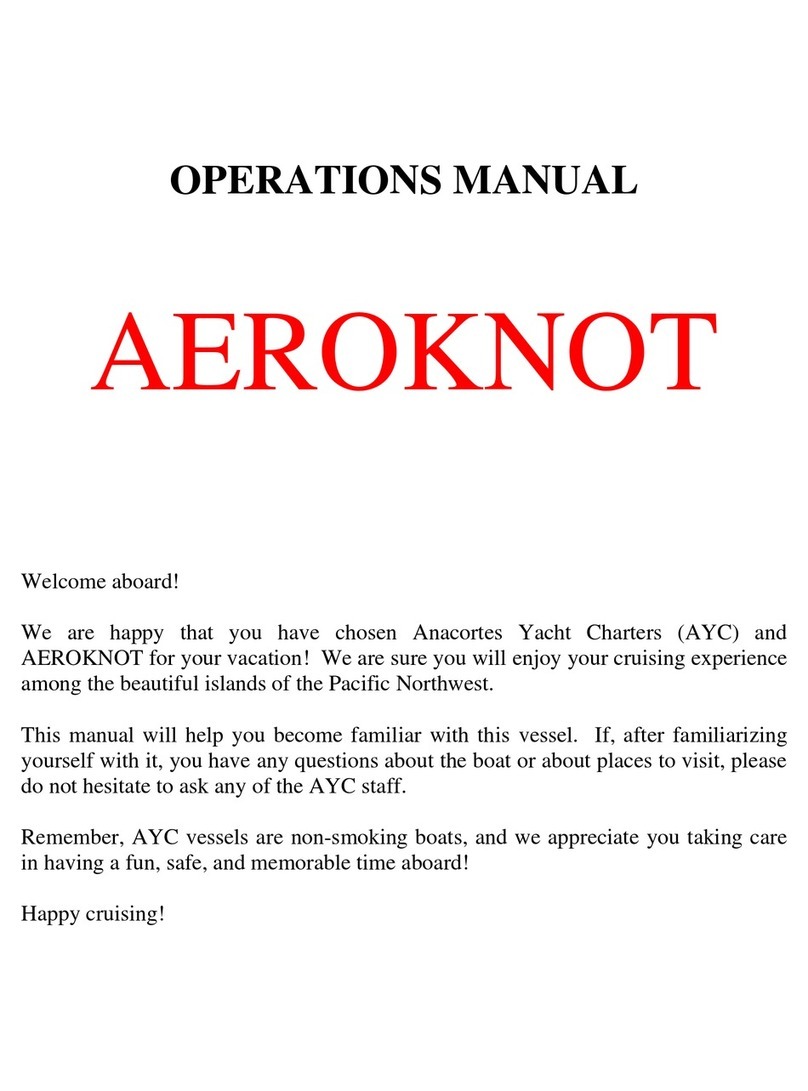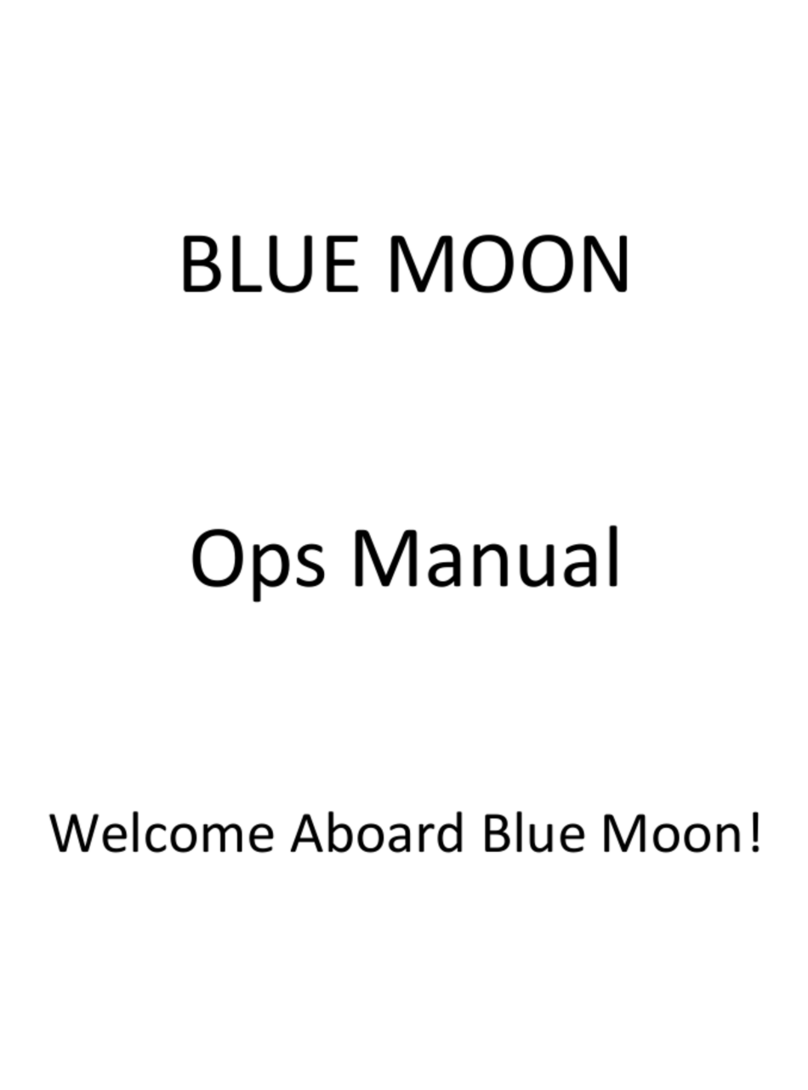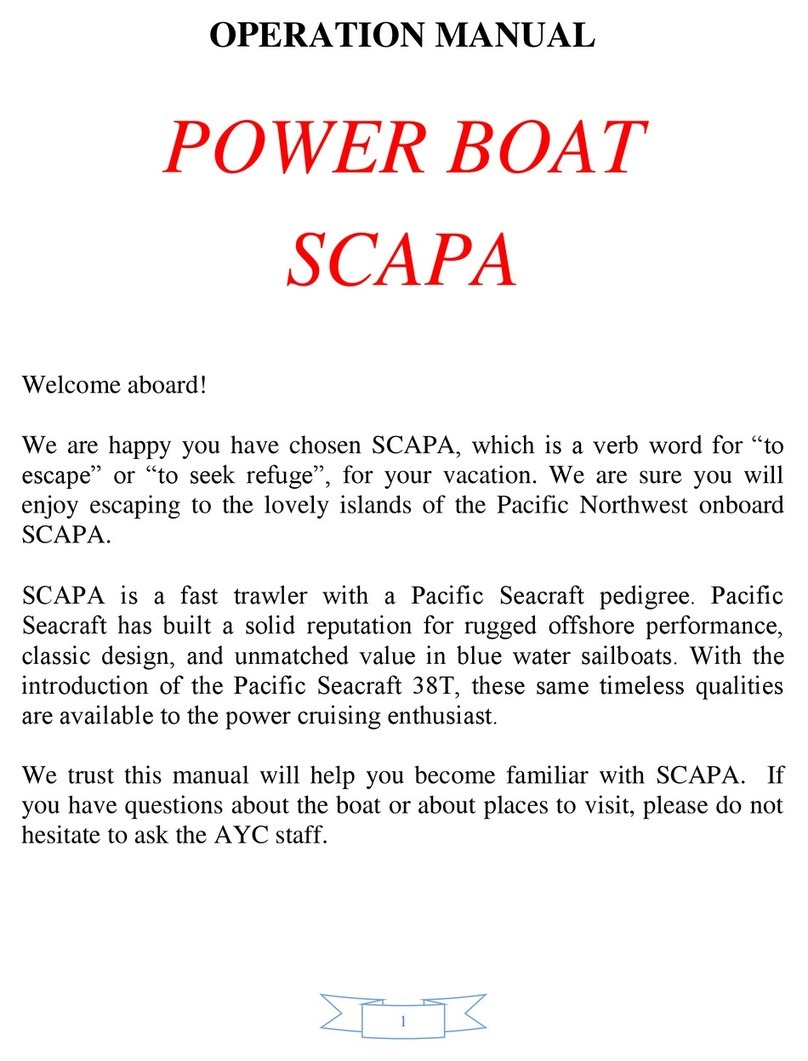Shut Down
Before shutting down, let the engine idle for about 5 minutes to cool. Ensure the
gearshift is in the neutral position and the throttle is idle. Turn off the engines by
pressing and holding the stop button. When the engine stops and the alarm sounds,
turn off the key.
Getting Underway
Disconnect the shore power cord (see AC Power next page). Close portholes,
windows, and hatches. Turn on VHF and electronics. Assign crewmembers to their
tasks. Put one crew member (the “dingiest” member of course!) in charge of the
dinghy if it is under tow. It needs to be kept on a tight leash when in the marina.
Once outside marina, have the crew members bring in fenders and put lines away.
Cruising
Slowly come up to cruising speed of 2000 rpms where you will cruise at approx.
7knots, using only 1gallon of diesel/hour. Using excessive rpms will only give you a
½ knot of speed and will only damage the engine. Speed will vary depending on
weight, load, and weather conditions
Docking
During docking, give clear instructions to the crew on what you will expect of them
i.e., with lines and fenders. Always come into the dock slowly allowing for any wind
or tide. If you have a choice, dock on the port side because as you put the
transmission in reverse, she will pull to port sucking you in closer to the dock.
Have the bow, stern, and spring lines ready. If you are short on crew, lead the lines
to the mid-section of the boat (where it is fattest) where your crew member can
easily step off with one of the lines, secure it, and quickly grab the next one.
As you are approaching the dock, have your crew call out distances to the captain (ie
20 feet, 10 feet, 3 feet etc.). This will help with a successful landing.
If you find you are too far from the dock, DO NOT have your crew jump! Back out
and do it again. Disaster will follow if someone falls in the water.
Fueling Up
You will need to fill it up upon completion of your charter. Your fuel tank holds 58
gallons. You should have a rough idea of the number of gallons you will need to add
to your tank. (i.e. you use 1 gal per hour and have run 18 hours = 18 gal.)
Open the fuel filler cap located portside aft with a winch handle. MAKE SURE YOU
HAVE DIESEL! Make sure it is going into the right deck fill! DOUBLE-CHECK! Before
pumping, have your oil/fuel sorb ready to soak up any spilled fuel. Do not add water
at the same time.
Put the Diesel nozzle into the deck fitting and pump slowly listening to the sound of
the flow. Pumping too fast may not allow excess air to escape, which will lead to
spillage out the vent. As the tank fills, the sound will rise in pitch or gurgle. Pay
attention to the vent that it does not spill fuel into the water. Top off carefully,
catching any spillage with your sorb. Take your time. The last 3 or 4 gallons are
slow.
Check your gauges at the helm with key on. Replace the deck fill caps and clean up
any spatter and wash hands thoroughly.



































